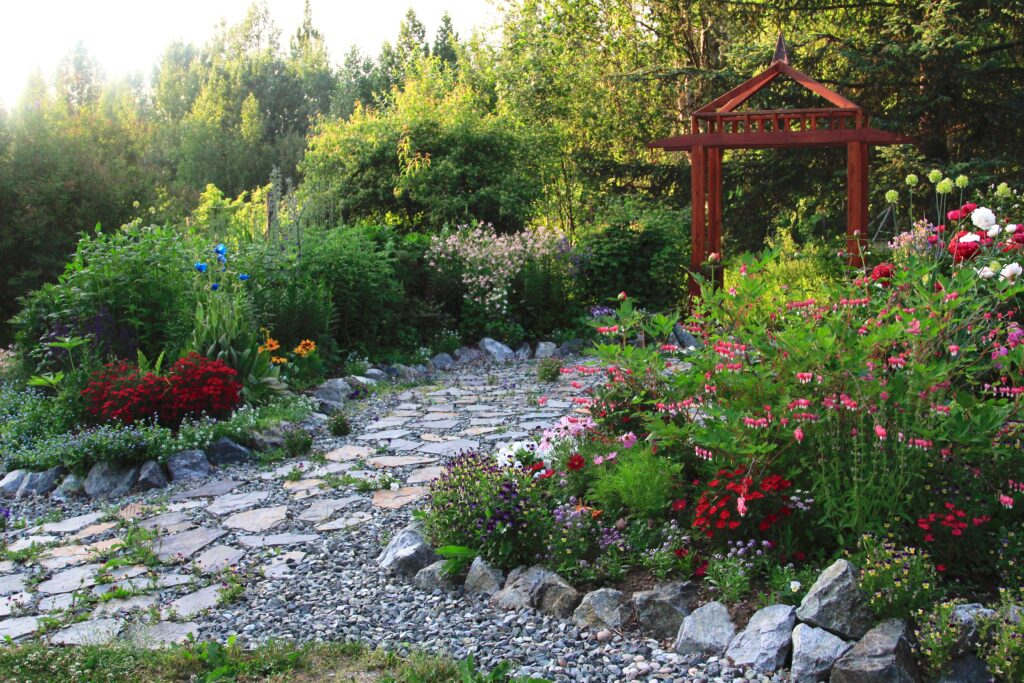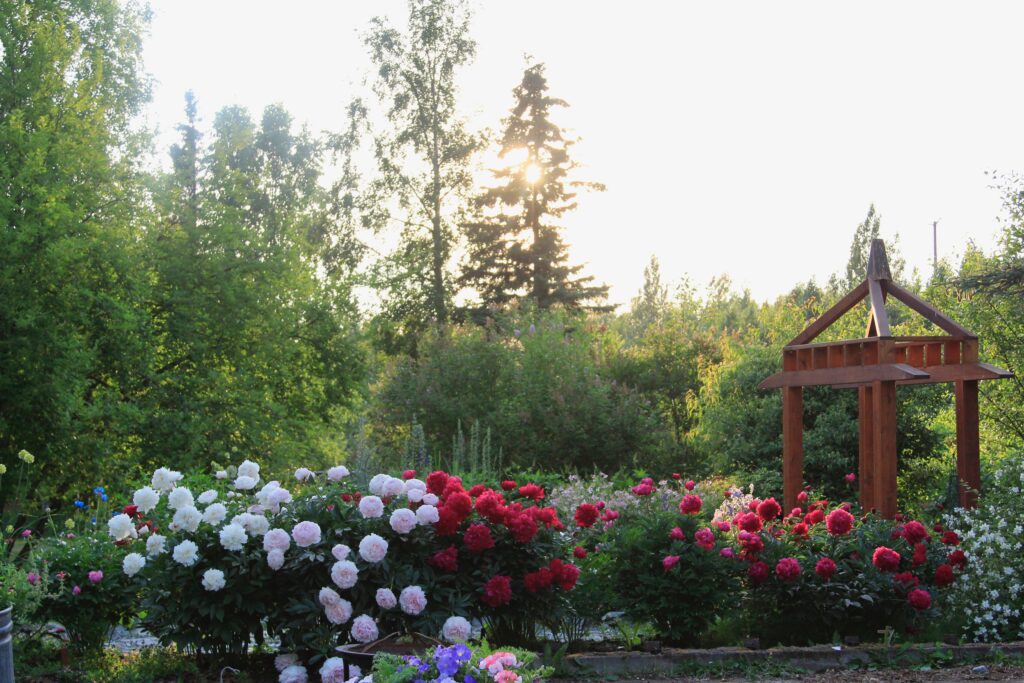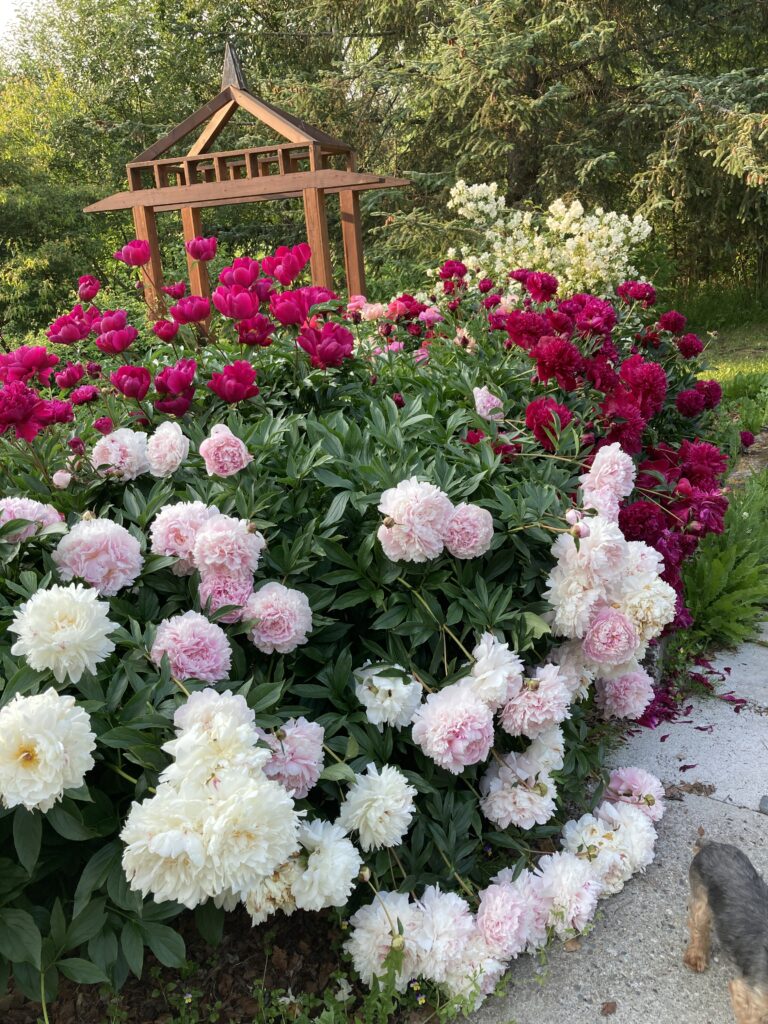Designing a Perennial Garden With Peonies
A beautiful home garden isn’t quite complete without Mother Nature’s crown jewel, the peony! Universally beloved, peonies will provide you with years of beauty to enjoy in your garden and home, and all it takes is a bit of planning, labor and time.
Consider Your Garden Site
Peonies can be grown in USDA zones 2-8, but need consistent winter chill to ensure the most abundant display of blooms. A general rule of thumb is that the daily low temperatures in winter need to fall below 40* F for 2+ months. This information is usually listed on the plant tag, product listing, or can be found with a quick google search. A good place to start is by seeking out the varieties that have already been identified as peak performers for your zone.
Plant your peony roots in fertile soil with a good level of humus (organic matter), mineral fertility, and a neutral pH, around 7. Ensure the planting site has excellent drainage with enough organic matter to keep the soil well aerated. Peonies require regular watering, similar to most plants that grow in the same environment, but cannot tolerate standing water near the roots of the plant…as the experts often say, “Peonies don’t like wet feet!”
In addition to good soil drainage, your peonies will also need plenty of air circulation around the plant, since peonies are highly susceptible to fungal diseases. When possible, it’s best to avoid planting peonies directly against a building or fence, make sure to allow ample air flow all the way around the plant. Keep in mind how large the peony plant will be when it is fully mature and plant accordingly.
Your peony garden will need sunlight at least 6-8 hours everyday, so consider your sunlight pattern. If you are in a hotter zone, you will most likely want your plants to be in semi-shade during the heat of the day. If you’re growing in a cooler climate, your peonies will thrive in ample sunshine. Here in Alaska, we have 20-22 hours of daylight and moderate daytime temperatures, so our peonies are grown in full sun without shade.

Non-Stop Blooms
What type of peony do you want in your garden? Peonies fall into three categories: Itoh, herbaceous and tree peonies. In this article, we’re focusing on herbaceous varieties, which include a fun variety of bloom forms; single, semi-double, fully-double, bomb, anemone and Japanese. There are many species and hundreds if not thousands of cultivars to select from, so it can be hard for a gardener to choose.
Determining what you would like to grow might depend on your color scheme as well as your budget, since some of the rare peonies can get quite expensive. One thing that we all agree upon is that we want to extend the bloom season as long as possible. A normal bloom time for herbaceous peonies last about three weeks. By choosing early, mid and late-blooming varieties you can extend the bloom season for up to 6 weeks in some locations.
Plant Supports
The flowers of double, semi-double and bomb peonies are often very heavy when fully bloomed, especially when it rains and the blossoms get water-logged. Providing extra support will help keep your peonies from flopping over or snapping, protecting the beauty of your garden.
Widely available options for supporting peony plants include: peony rings, which are 12 to 18-inch diameter metal rings with legs; concrete reinforcing wire, which can be bent around the plant to form a cage; or pre-made tomato cages. You can also use bamboo stakes or branches around the plant and weave twine in-between the stakes to provide a supportive web. The support structures will normally be hidden by the canopy of the foliage once it unfurls into a mature plant.

Companion Plants
No matter how much we want our peonies to bloom all summer, alas, it is not meant to be. Maybe that is why we cherish their beauty and fragrance so ardently? To ensure our garden provides us with a full season of beauty, we plant longer-season companion plants along side our peonies, to bring additional wow to the garden once the peonies are done blooming.
Whatever plants you choose, be sure that they like the same growing conditions as your peonies. Exposure to sun, air flow, soil pH, drainage and zone hardiness should all be considered when adding to your garden.
Spring bulbs are an excellent companion plant and will get the bloom show started early in the season: consider tulips, daffodils, hyacinth, crocus, or even a cluster of Siberian or bearded Iris. Perennial plants are like a gift that keeps on giving, since they come back every year and often bigger and better than ever. For any gaps in your garden, remember that annuals are perfect for filling in space and come in a variety of sizes, from low-lying sweet alyssum to tall spiky Madam Butterfly snap dragons. Be sure to plant companion plants in groupings of 3 or more plants or bulbs, so that they make a robust statement that draws the eye.
Whatever ‘friends’ you plant along side your peonies, it is ideal to incorporate plants that provide a variety of visual texture. Spiky plants, broad or variegated leaf structures, low ground cover plants, all of intermittent heights, will help achieve this. Similarly, sculptures, iron works and creative garden art as well as a comfy place to sit and admire your handy work will add to the garden experience.
As an added bonus, peony foliage is attractive all summer and often turns pretty shades of gold and bronze in the fall. Don’t cut the foliage back to the ground until late fall — after all signs of green have left the leaves.

Have Patience
For first year peony plants, most gardeners will remove all of the buds before they form, so that the plant can focus on root development. As peony plants mature through the years, they will continue to provide you with a more robust and impressive display every season, so dis-budding in the early years can be looked at as an investment in future blooms.
An annual spring application of fertilizer will provide the necessary nutrition for the plant to grow larger and produce more blooms year after year. As the old adage about peony growth states: first year they sleep, second year they creep, third year they leap!
Once your plants are mature, you can start to bring your garden blooms indoors by cutting stems when the buds are still in a soft marshmallow-feeling stage, and you will be rewarded with the sweet smell of peonies throughout your living space.
For a more in-depth look at how to plant peonies for cutting, download our free resource, How To Plant A Peony Cutting Garden from our Press and Resources tab, or on the right side of your browsing window.
Enjoy your artfully arranged perennial garden, and remember to take time to stop and smell the roses…or peonies.
-Written by the members of the Alaska Peony Cooperative

